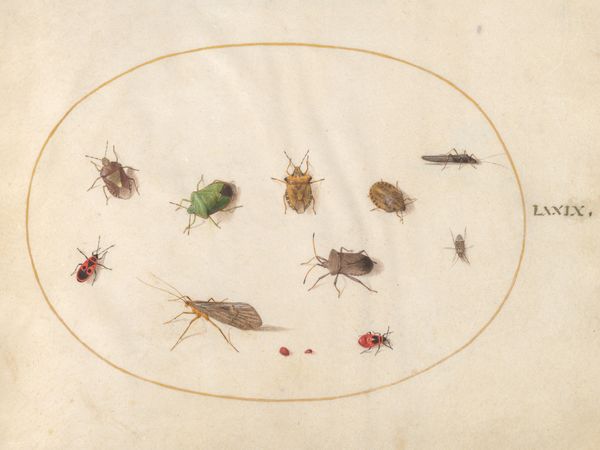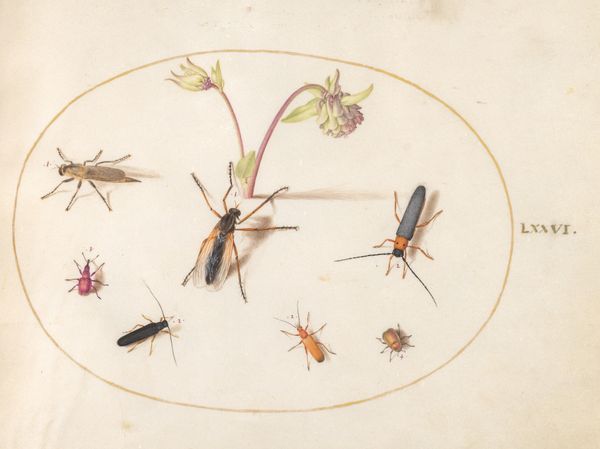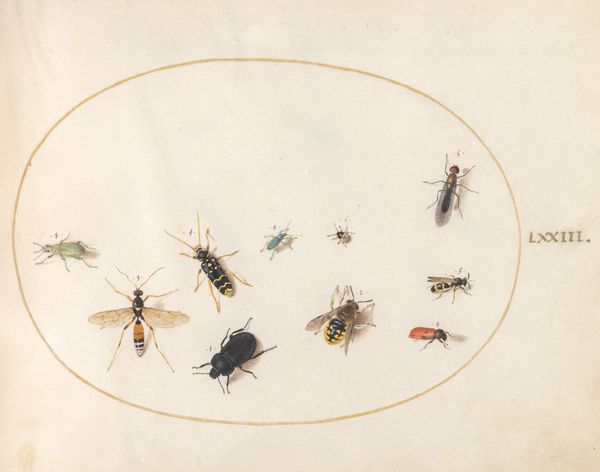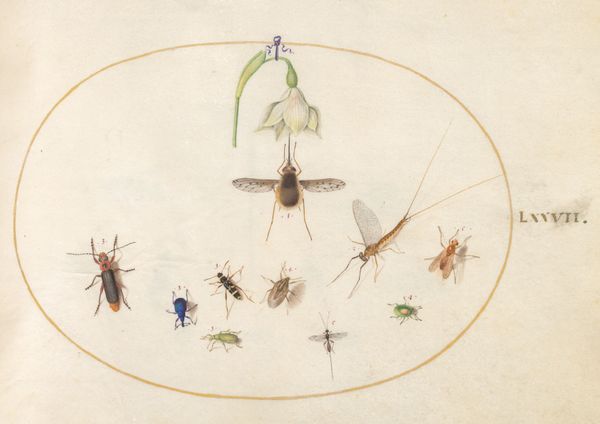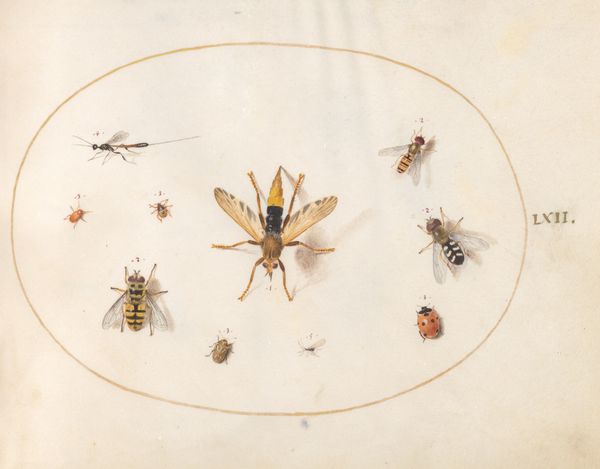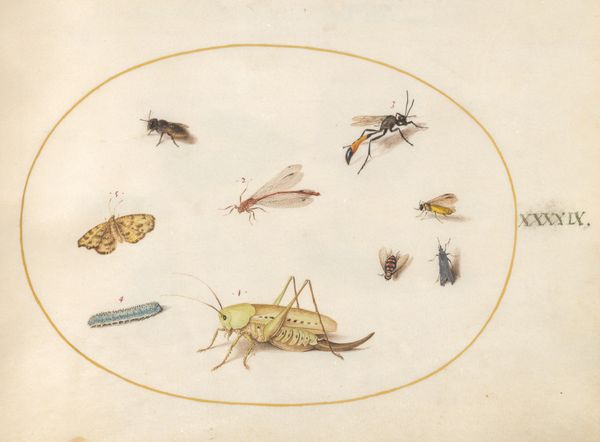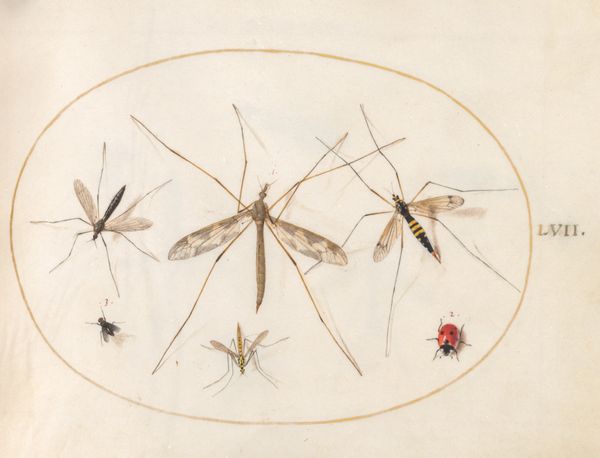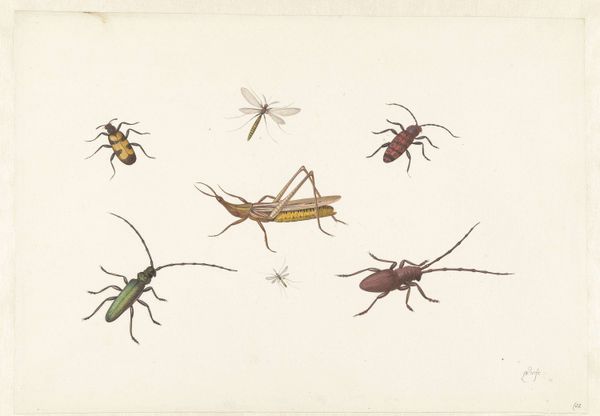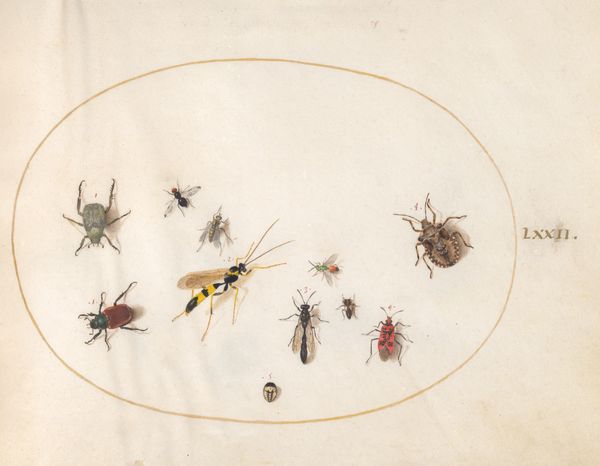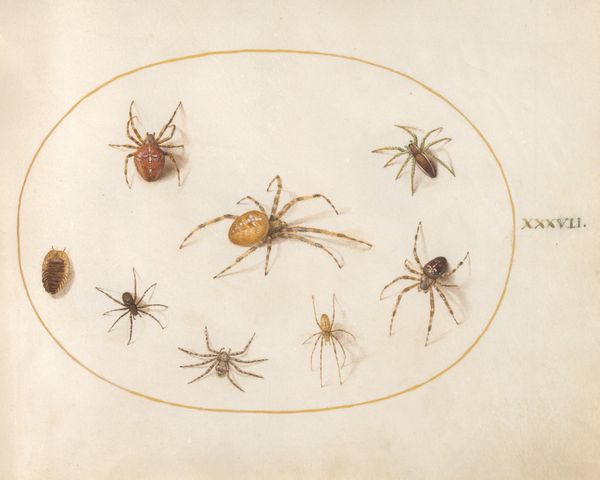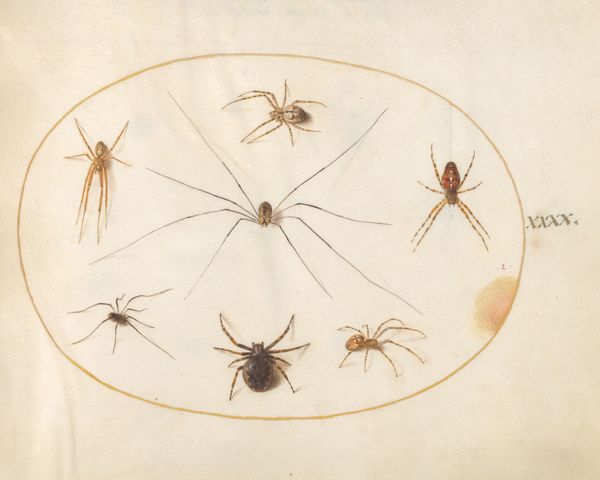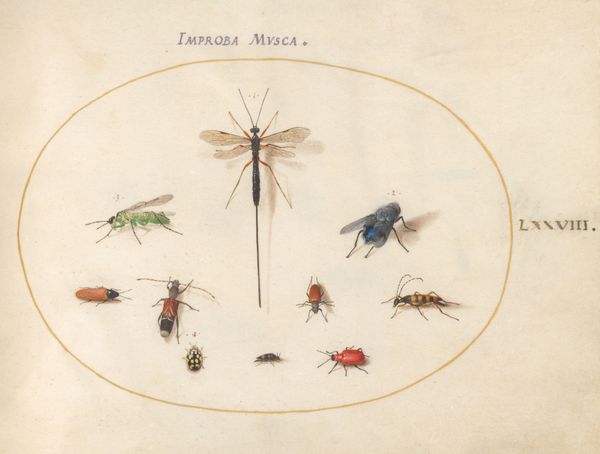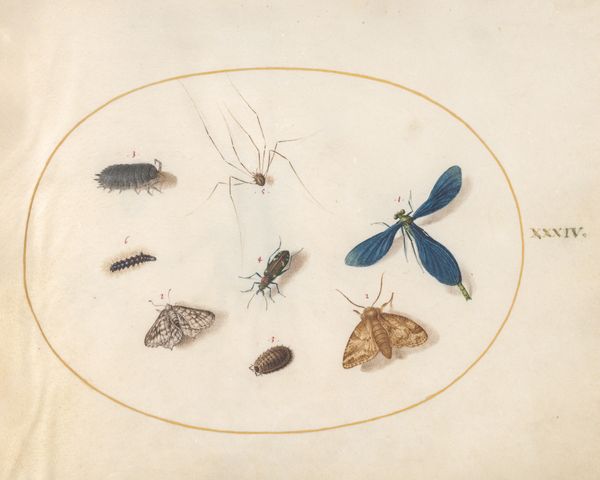
Plate 59: Seven Insects, Including a Hawthorn Shield Bug, Crane Flies, and a Hoverfly c. 1575 - 1580
0:00
0:00
drawing, watercolor
#
drawing
#
figuration
#
11_renaissance
#
watercolor
Dimensions: page size (approximate): 14.3 x 18.4 cm (5 5/8 x 7 1/4 in.)
Copyright: National Gallery of Art: CC0 1.0
Curator: Joris Hoefnagel's "Plate 59: Seven Insects, Including a Hawthorn Shield Bug, Crane Flies, and a Hoverfly" made circa 1575-1580 offers a fascinating glimpse into Renaissance scientific illustration through watercolor drawing. What is your first impression of it? Editor: It's wonderfully creepy! Like something you'd find tucked away in an old apothecary's cabinet, but also surprisingly delicate. They're both frightening and mesmerizing all at once. It's bugs, but it feels...artsy. Curator: I appreciate your sensory response. It reminds us of the important role art plays in framing our perception of the natural world, for even seemingly neutral observation has ideological consequences. During the Renaissance, detailed depictions of the natural world grew more scientific but retained elements of art and human intervention, thus continuing the intersection between observation and cultural construction of what natural entities and life can tell us. Editor: True! Thinking about how the artist chooses to display them – arranged in an almost decorative way, rather than scientifically pinned or anything—it’s like he’s presenting their intrinsic horror in a way that asks us to look beyond just, “ew, bugs!” Does that make sense? Curator: Absolutely. By placing these insects within an oval border, he's carefully curating an accessible tableau of the micro-world around us, but that access remains mediated and deliberately composed, to make a statement about not just science but about knowledge as well. Who has access, who mediates, and what can one do with information that isn't democratized. Editor: So, almost a power dynamic reflected in something as simple as insect drawing, wild. The tiny numerals by each bug... that must mean he wasn't aiming for scientific accuracy alone. There’s a definite artistic… flourish. You can imagine Hoefnagel adjusting the legs just so. Curator: That attention to detail highlights the social and political currents circulating in Europe. He might be alluding to the themes of death and decay that resonate with the pervasive religious wars and power struggles shaping that moment, even with tiny, seemingly innocuous images such as these. These elements also elevate his rendering beyond simple observation to engage actively with prevailing socio-political issues. Editor: Wow. Suddenly these aren't just pretty, kinda spooky bugs. You've totally bugged my mind. I love it! Curator: Indeed! Next time you see a mosquito, it may remind you of a Renaissance courtier entangled in web of power and political intrigues.
Comments
No comments
Be the first to comment and join the conversation on the ultimate creative platform.
